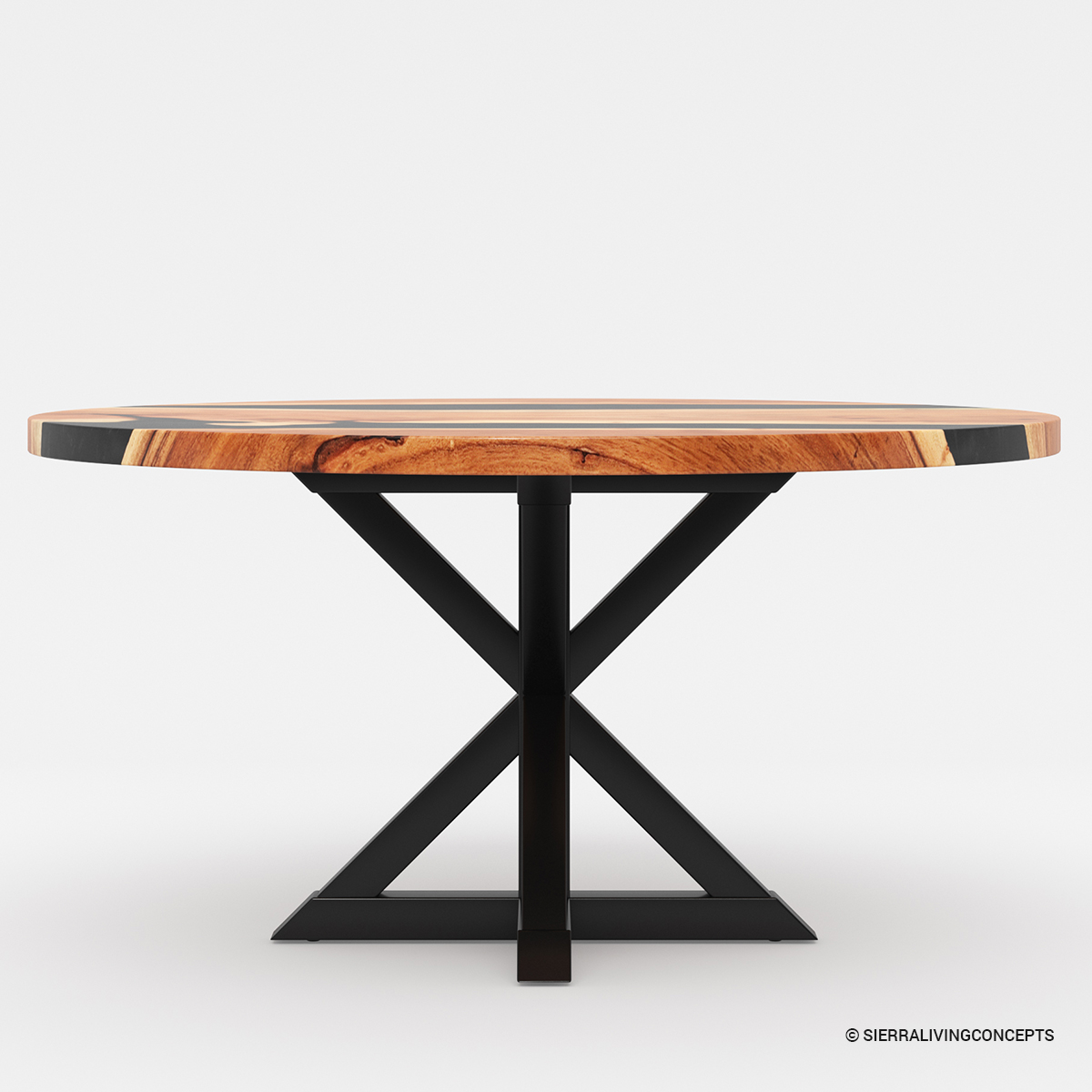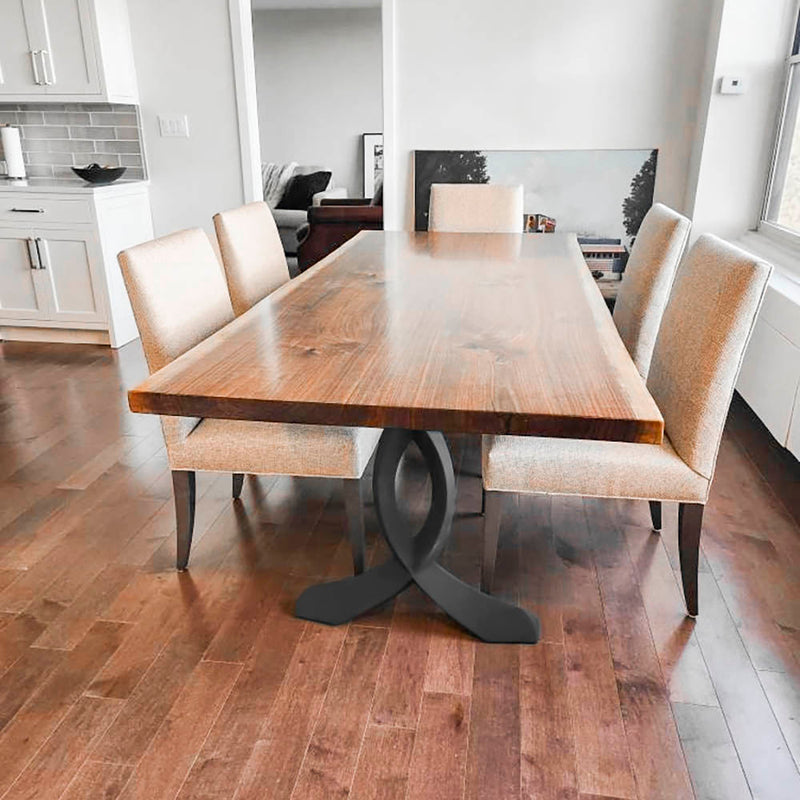From Conventional to Modern: Find the Perfect Dining-room Table Legs for Your Design
The choice of dining-room table legs plays a pivotal duty in defining the total character of your space, connecting the gap in between conventional workmanship and contemporary aesthetics. While timeless designs such as cabriole and transformed legs stimulate a sense of classic elegance, modern styles like hairpin and geometric choices present a chance for striking visual rate of interest. Reviewing the ideal equilibrium between these designs requires a nuanced understanding of your existing design and individual taste. As you take into consideration these components, the concern stays: just how can you perfectly incorporate these diverse leg styles to produce an unified dining experience?
Comprehending Table Leg Styles
The selection of dining-room table leg styles can substantially influence both the visual appeals and capability of the room. Each leg design contributes distinct visual aspects and useful features, providing to diverse design choices and use demands. Comprehending these styles is important for choosing the right table that straightens with your general interior decoration vision.
For example, conical legs use a clean, classic appearance that can improve a room's elegance, while stand bases offer stability and take full advantage of legroom, making them perfect for smaller rooms. Hairpin legs, a hallmark of mid-century modern-day style, introduce a commercial style, enabling a ventilated, open feel. Trestle legs evoke rustic charm, supplying robust assistance and a sense of eternity.
Wood legs can bring warmth and structure, whereas steel alternatives typically share a sleek, contemporary ambiance. Inevitably, understanding table leg designs is crucial for creating a cohesive eating location that mirrors personal style while making sure usefulness and convenience.
Conventional Table Leg Options
When choosing dining-room table legs, traditional options typically personify classic elegance and craftsmanship. These designs show a rich heritage and a dedication to high quality, making them excellent for those that appreciate classic aesthetic appeals.
Among one of the most famous typical leg designs is the cabriole leg, identified by its elegant bent shape. This layout usually includes attractive makings and is most generally found in Queen Anne and Chippendale furnishings. An additional prominent choice is the transformed leg, which boasts a series of smooth, rounded shapes that provide a classic appearance while preserving stability.
Moreover, the straight leg, while easy, provides a sturdy and unadorned framework that can mix perfectly with a variety of tabletop styles. For those drawn to ornate detailing, claw-and-ball feet legs stimulate a feeling of magnificence and can serve as a spectacular focal point in any eating area.
Finally, pedestal bases, although not purely legs, supply an alternative traditional alternative that permits sufficient legroom and can be wonderfully sculpted. Each of these traditional leg designs adds to the general ambiance of an eating space, marrying feature with aesthetic allure.

Modern Table Leg Layouts
Modern table leg styles offer a varied range of designs that emphasize tidy lines and innovative products. These styles frequently focus on functionality while functioning as striking prime focus within an eating room. Minimalist aesthetics prevail, with legs crafted from products such as metal, glass, and crafted timber, which contribute to a contemporary and airy feel.
One prominent layout is the hairpin leg, identified by its slender, tapered framework that provides stability without frustrating the table top (dining room table legs). This style is usually located in mid-century modern furniture and can effortlessly match numerous table forms. An additional trend is using geometric forms, where legs might take on angular or unbalanced kinds, adding visual rate of interest and a touch of virtuosity

Blending Styles for Unique Rooms
Often, homeowners seek to create one-of-a-kind eating areas that show their personal style by mixing different style elements. This approach enables their explanation the unification of diverse aesthetic appeals, resulting in a harmonious yet distinct atmosphere. For example, pairing a rustic wood table with smooth, contemporary steel legs can produce a captivating contrast that boosts the space's overall allure.
Additionally, incorporating vintage table legs with contemporary tabletops can evoke a feeling of history while maintaining a modern-day perceptiveness. Such mixes not only showcase individual taste but additionally motivate imagination, allowing homeowners to curate a space that feels both personal and inviting.
Color plays an essential role in this mixing process; picking table legs that enhance or comparison with the existing shade system can enhance visual passion. Whitewashed legs can soften the boldness of a dark table surface, developing a balanced aesthetic.
Tips for Picking the Right Legs
Selecting the right table legs is necessary for achieving both performance and visual appeal in your dining area. my blog Begin by considering the overall design of your area. Conventional settings profit from legs that include intricate carvings or transformed layouts, while contemporary spaces may require streamlined, minimal designs.
Following, evaluate the elevation and security of the legs. dining room table legs. Basic table vary in between 28 to 30 inches in elevation, so ensure the legs match this measurement for convenience. Furthermore, durable products, such as wood or steel, can boost security and longevity
Evaluate the leg shape too-- choices include straight, tapered, or pedestal layouts. Straight legs supply a traditional look, while conical legs can add a touch of sophistication. Pedestal bases supply ample legroom and are suitable for smaller rooms.
Final Thought
In summary, selecting the ideal dining-room table legs requires careful factor to consider of both contemporary and conventional styles. Conventional options such as cabriole and turned legs supply classic style, while modern-day styles like hairpin and geometric shapes provide a modern touch. By integrating leg design, height, and material with the total decor, a natural and inviting atmosphere can be attained. Eventually, the selected table legs should mirror the desired aesthetic, enhancing the dining experience within the space.
The range of dining area table leg styles can dramatically affect both my blog the visual appeals and capability of the room. Ultimately, comprehending table leg designs is important for developing a natural eating area that reflects personal design while ensuring practicality and convenience.One of the most legendary typical leg styles is the cabriole leg, identified by its stylish rounded form. Straight legs use a classic appearance, while tapered legs can add a touch of beauty.In recap, selecting the optimal dining room table legs needs cautious factor to consider of both modern-day and standard styles.